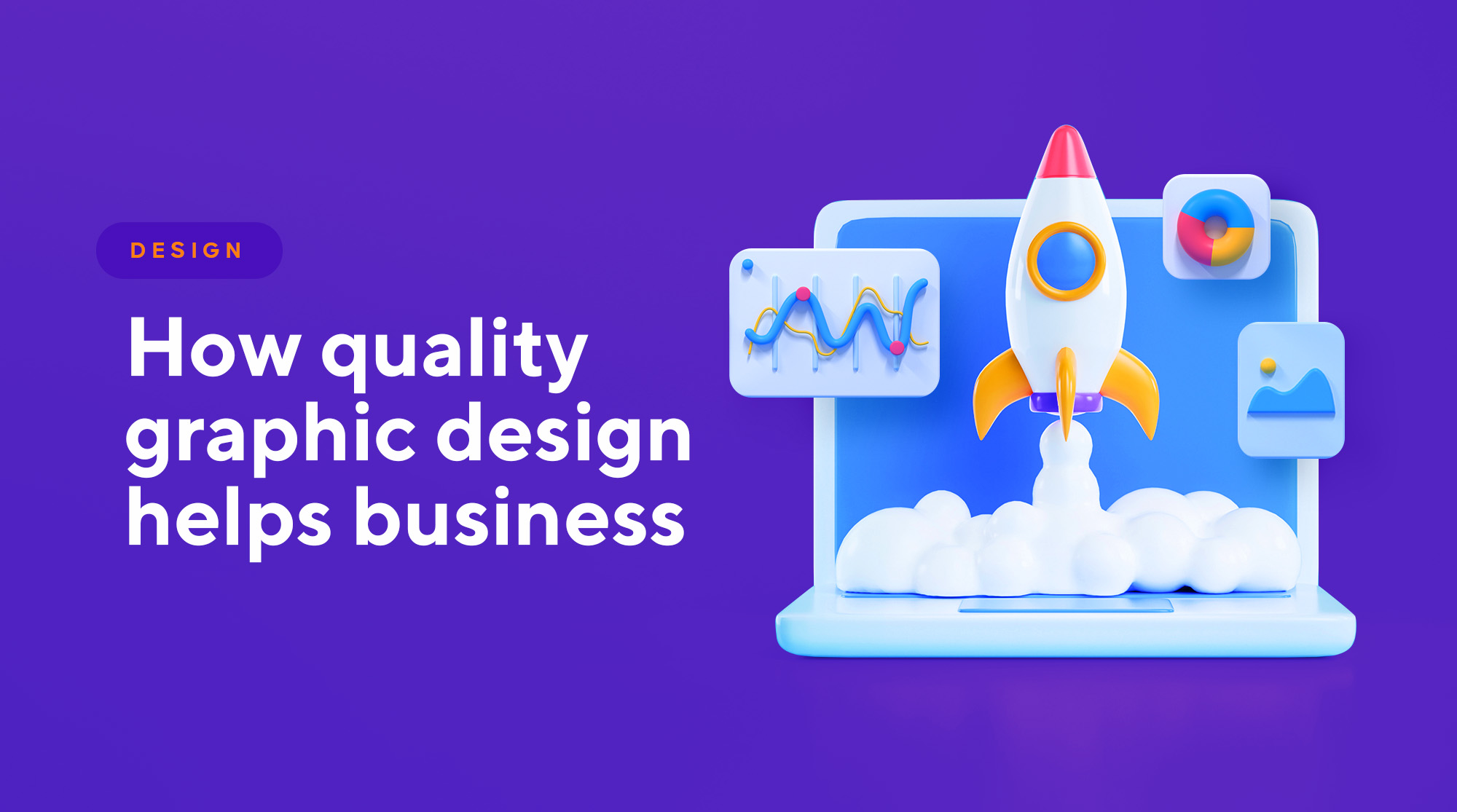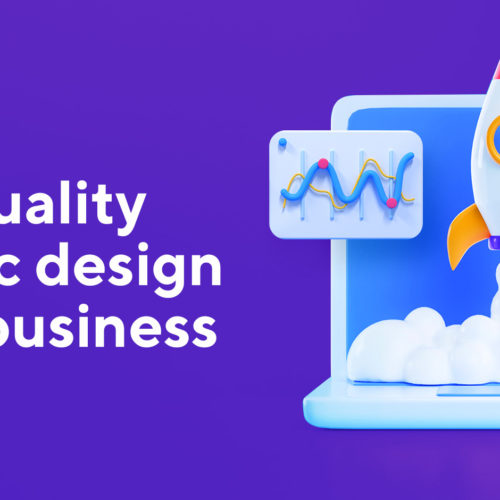Graphic design is one of the most important aspects of marketing and advertising. Think about the last time you saw an ad online, on the TV, on a billboard or in a magazine. Chances are, it was accompanied by some sort of graphic. Even if the ad was purely text, the choice of font and text layout follows graphic design principles.
The role of design has only become more important with the advent of digital marketing, from social media and websites to sales & marketing collateral. Any business, from small to large, needs good graphic design to successfully promote its products/ services.
In this blog post, we will discuss the importance of good graphics and how you can determine what makes a graphic design good.
Topics
- Why are good graphics important for business?
- What types of Graphics are used in Marketing and Sales?
- How can you tell if a design is good? Graphic design quality checklist
- How do you create quality designs for your business?
Why are good graphics important for business?
Have you noticed how content published by big brands looks polished, professional and eye-catching? Or the millions of dollars spent every year on creating new advertising? Brands are more committed than ever before to investing in their appearance. Ever wonder why they continue to make the effort?
Here’s a breakdown of the key factors that make quality graphic design critical for business success.
We live in a visual world.
Digital technology has revolutionized our visual experience. In a fast-paced world where we are constantly bombarded with content, graphics help us process information more efficiently. Our brains process visual information 60,000 times faster than text. Not only are graphics critical to getting your brand noticed, but visual elements also influence how a brand is perceived more easily than text.
Design plays a role in first impressions.
Making snap judgements is human nature – it takes only takes us a tenth of a second to form an opinion about a person. Brands are no different. People will form an opinion about your product, website, ad e.t.c within seconds of encountering it.
British researchers found that 94% of first impressions made by website visitors were design-related. Participants strongly preferred low visual complexity and high prototypicality (how representative a design looks for a certain category of websites). By using design principles, brands can appeal to and engage audiences and deliver messages effectively.
Strong visuals cut through the noise.
Attention is a finite resource. As the volume of content published every day continues to climb, our ability to create memorable connections with what we see or read is falling. From being exposed to about 500 ads a day back in the 1970s to as many as 5,000 a day today, it’s only getting worse.
Because the human brain is unable to process such a deluge of information, most advertisements seen are simply ignored or forgotten about in seconds. Only ad content that is most interesting and relevant to us as individuals leave an impression in our minds. Graphic design principles such as hierarchy, contrast and balance ensure messages are clear and effective. In a noisy environment, the strong visual design gives brands a competitive edge.
Good design sells.
It’s no secret that good design has a monetary value – the proof is right before us, in the choices we make as consumers every day.
A 2018 McKinsey report found over five years, companies that invested in good design had 32% more revenue and 56% more total returns to shareholders.
A similar 2005 study from Design Council revealed that design-led businesses outperformed others on the market by as much as 200%.
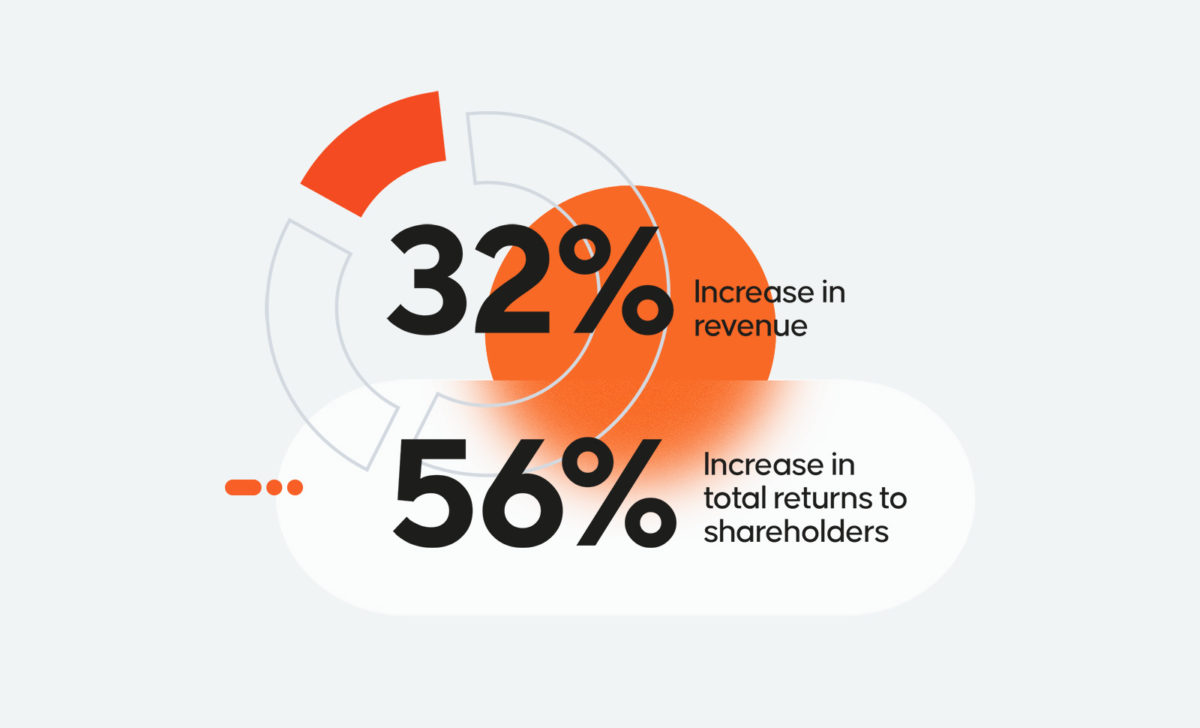
What types of graphics are used in marketing and sales?
There is a huge range of visuals that can be used in marketing and sales, from product packaging to website design, logos, and social media posts. Here are the key categories of graphics recommended for businesses:
Brand assets
Branding assets encompass a core set of collateral that forms the identity of a business. Distributing quality brand assets creates a consistent impression of a business, making it more memorable, recognizable and trustworthy in people’s minds. Foundational brand assets include the logo, color palette, tagline, stationery, and style guide.
Social media posts
Social media platforms are a powerful way to reach out to potential and current customers. Posting engaging visuals is key to building a following and growing a brand’s presence online. Graphics for social media should be attention-grabbing, on-brand, and tailored to the specific platform being used.
Infographics
Infographics are visual representations of data or information that are used to communicate complex ideas in a simple, easy-to-understand way. They often include statistics, charts, and graphs, and can be shared across social media and other channels.
Product packaging
Product packaging is the first thing potential customers see when they encounter a product on store shelves or online. It’s important to make sure packaging is eye-catching and on-brand, as it’s a key factor in influencing purchasing decisions.
Website design
A business website is often the first point of contact between the company and its customers. It’s important to make sure the site is well-designed, user-friendly, and reflects the brand identity positively.
Marketing campaign design
Graphics are an important part of any marketing campaign. Good graphic design can help a business to stand out from the competition, sell more products, and build trust with customers. When used correctly, visuals can be a powerful tool for communicating messages and driving conversions.
Publication Design
Publication design encompasses any type of printed material, from magazines and newspapers to books and brochures. A well-designed publication creates a professional impression and helps to communicate messages effectively.
Environmental Design
Environmental design encompasses the graphics used in physical spaces such as stores, office buildings, tradeshows, and public transportation. These visuals help to create a cohesive brand experience and can influence awareness and loyalty, and purchasing decisions.
Sales Presentation Graphic Design
The goal of a sales presentation deck is to function as a visual aid for key messages and takeaways. Effective presentation design lays out these messages in a way that is easily skimmable and digestible, without overwhelming the audience.
Visual elements such as images, graphs, and charts help with comprehension. A good sales presentation graphic design should be clear, concise, and on-brand. It should also be tailored to the specific audience it will be presented to.
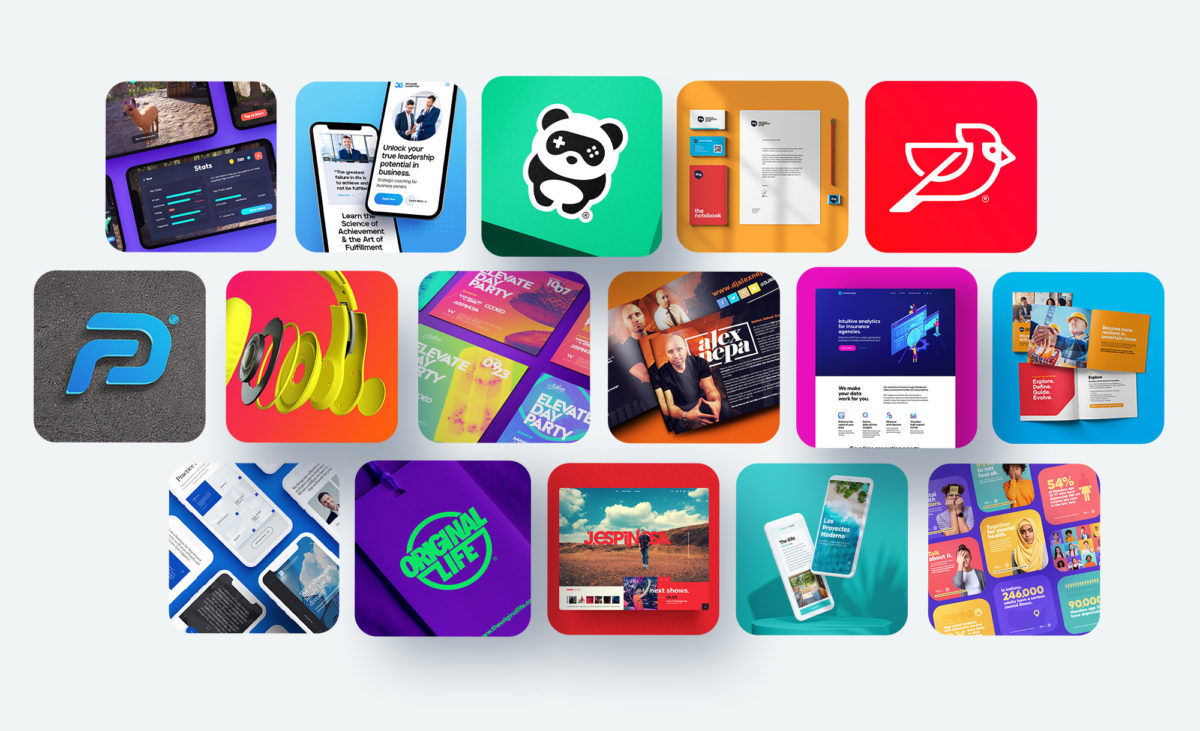
How can you tell if a design is good?
There are a few key things to look for when assessing the quality of a design.
Graphic design quality checklist:
- Is it appropriate for the target audience?
- Does it meet the goals of the project?
- Does it meet technical requirements?
- Is it visually appealing?
- Is the design on-brand and consistent with the company’s identity?
Is it appropriate for the target audience?
Design choices Iike color schemes, font selections, and image choices should reflect the preferences and interests of the target audience. A financial institution targeting B2B clients should look and feel very different from a retail brand targeting Gen Z.
Does it meet the goals of the project?
A good design aligns with business goals. It creates emotional connections and inspires the action required by the audience for the business to achieve its goals.
Does it meet technical requirements?
A design might look great, but if it doesn’t meet the file format or size requirements of the project, it won’t be usable. Always test your graphics to make sure they look good on different devices and screen sizes.
Is it visually appealing?
This is subjective, but a well-designed piece should be pleasing to look at. It should use color, typography, and other elements in a way that is visually appealing and easy on the eyes.
Is the design on-brand and consistent with the company’s identity?
A good design reinforces the company’s brand identity. It should be consistent with the company’s color palette, typefaces, and other design elements.
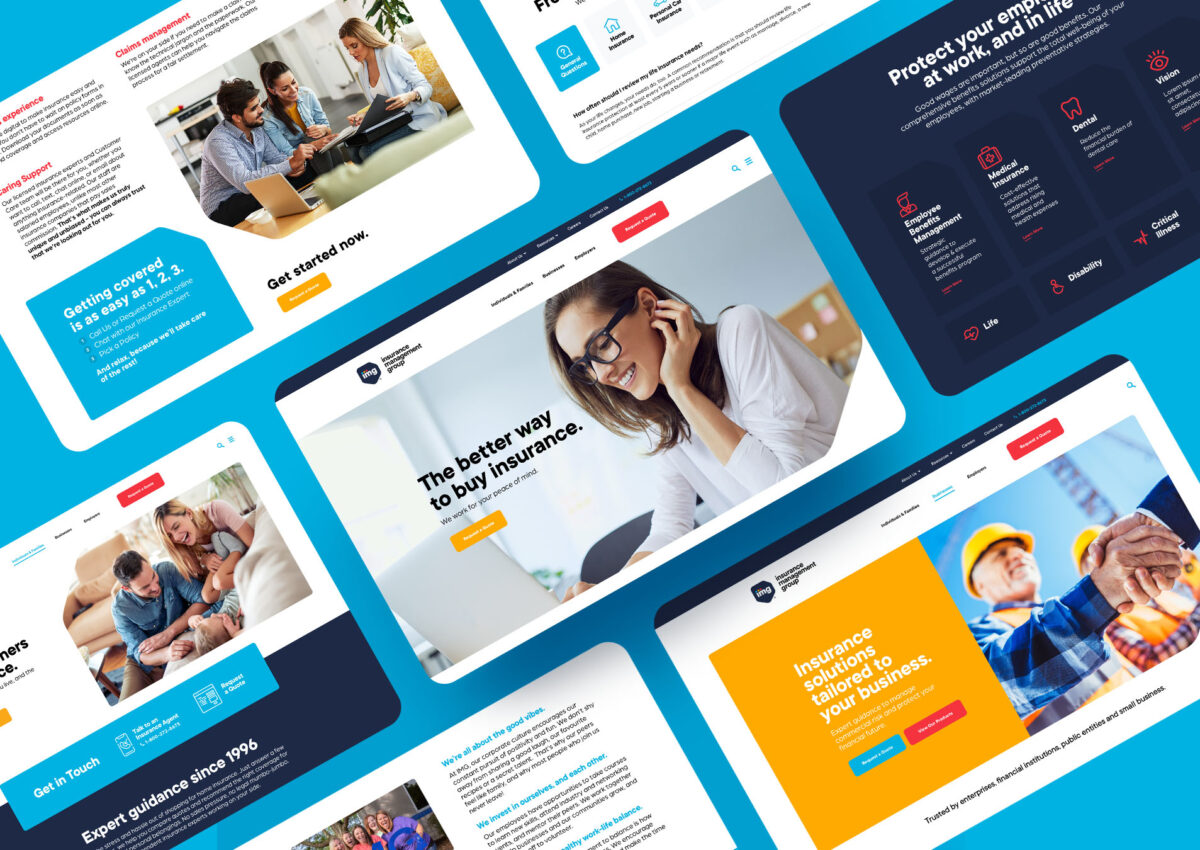
How to create quality designs for business?
High-quality graphic design is a critical ingredient for business success and growth. Creating quality designs is not always easy, but there are a few things businesses can do to set themselves up for success:
Invest in Good Design Software
Good design software is an important investment for any business that wants to achieve the level of execution needed. There are many options on the market, from simple and user-friendly programs like Canva to more complex ones like Adobe Creative Suite.
Hire a Graphic Designer
If you don’t have the internal resources to invest in design, hire a freelance graphic designer or an agency that specializes in small business branding. A professional designer will be able to create quality designs that reflect your company’s identity and meet your business goals.
Create a Style Guide
A style guide is a document that outlines the dos and don’ts of your company’s visual identity. It should include things like logo usage, color palette, typography, and other design elements. Having a style guide helps to keep your designs consistent and on-brand.
Conclusion
We live in a visual world and most – if not all – of our decisions are driven by visual cues and interactions. In this environment, poorly executed brand graphics can hurt your business and might even turn off your target audience.
Quality graphic design is key to achieving success for any sized business, and why businesses must prioritize investing in the best brand assets and campaign collateral possible.
Wondering where to find an experienced Graphic Designer?
Check out our Graphic Design Subscriptions! Our team of design experts and project managers are here to help you take your business to the next level. Flexible pricing options help you stay on budget while fulfilling all your marketing needs.
Book a Free Consultation to explore how we can help your business win.




